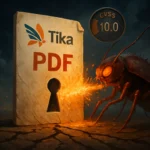Cybersecurity researchers have uncovered an alarming trend in malware distribution tactics, with threat actors now exploiting GitHub as a platform to disseminate malicious software disguised as popular utilities and office applications. This development marks a significant escalation in an ongoing campaign that has already utilized over 1,300 domains to lure unsuspecting users into downloading harmful programs.
The Evolution of a Sophisticated Malware Campaign
Initially reported by FACCT specialists last summer, this large-scale operation has been targeting users searching for cracked or pirated versions of well-known software. The criminals behind this scheme have now expanded their reach by leveraging GitHub’s popularity and perceived trustworthiness among developers and tech-savvy individuals.
Previously, the campaign relied heavily on social media platforms such as LinkedIn, where over 300 unique accounts were identified promoting websites hosting compromised software. The majority of these accounts were traced back to Pakistan (66%), India (8%), and Bangladesh (3%). In Russia, similar promotional activities were observed across popular social networks, video hosting sites, and educational platforms.
GitHub: The New Frontier for Malware Distribution
The inclusion of GitHub in this malicious campaign represents a concerning shift in tactics. Threat actors are creating posts and comments on the platform, strategically designed to promote domains hosting malware-infected software. These promotional materials often include brief but persuasive descriptions of the software, highlighting its benefits and technical requirements.
Researchers have noted a significant spike in malicious activity on GitHub, with daily post counts rising from an average of 25-40 to over 100 in mid-September. On September 19 alone, 188 malicious posts were detected, indicating a rapid increase in the popularity of this distribution method.
Characteristics of Malicious GitHub Activity
The GitHub accounts used in this campaign typically exhibit the following traits:
- Recently created profiles
- Potential compromise of legitimate accounts
- Collaboration between multiple users in some posts
- Use of image-based passwords for malware archives
The Malware Behind the Campaign
While the distribution methods have evolved, the malware families being spread remain consistent. The campaign primarily focuses on three types of malicious software:
- Vidar: A sophisticated information stealer
- Cryptobot: Malware targeting cryptocurrency wallets
- RedLine: A versatile data theft tool
These malware variants are typically hosted on popular file-sharing platforms such as Mega and Mediafire, with GitHub serving as the promotional vector to direct users to these downloads.
This evolving malware distribution campaign underscores the importance of maintaining vigilant cybersecurity practices. Users should exercise extreme caution when downloading software, especially cracked or pirated versions, and always verify the authenticity of sources. As threat actors continue to exploit trusted platforms like GitHub, it’s crucial for both individuals and organizations to strengthen their security measures and stay informed about emerging cyber threats.






